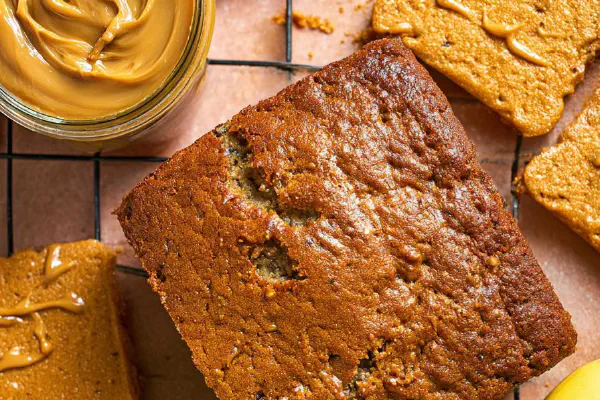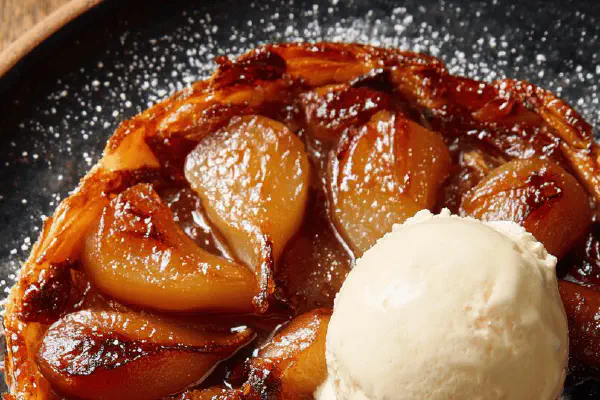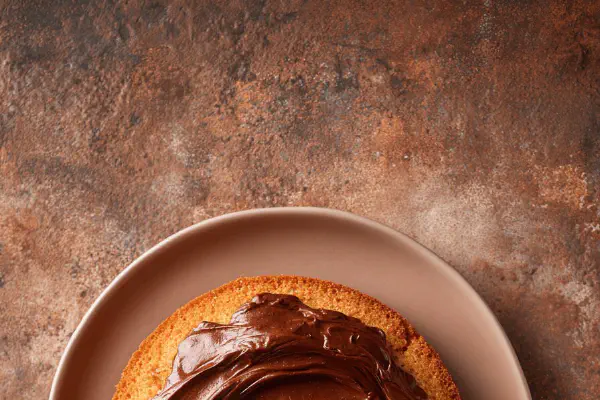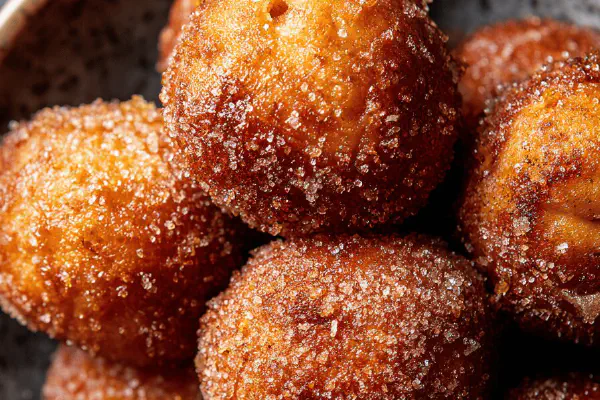Featured Recipe
Upside-Down Cinnamon Brioche
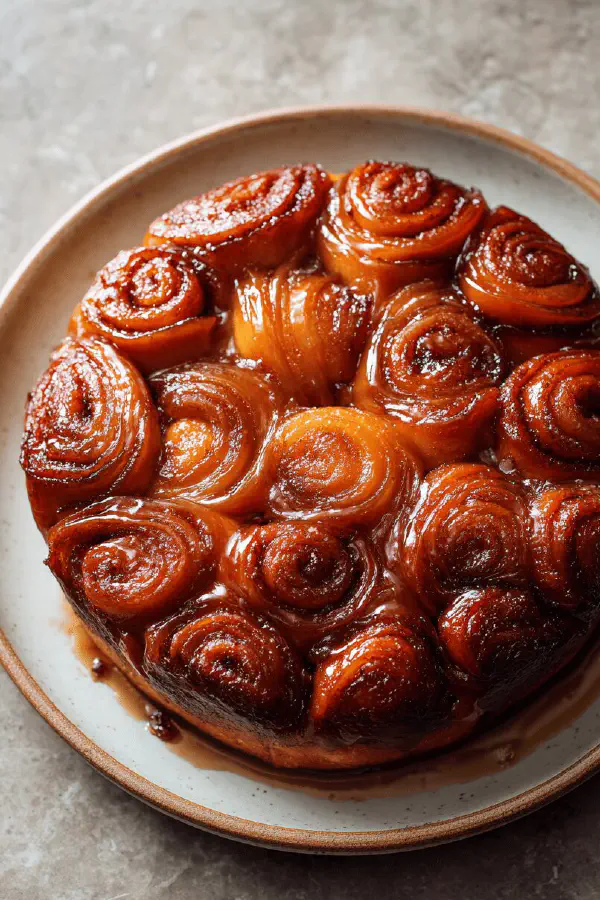
By Kate
"
A buttery, yeasted brioche rolled with cinnamon sugar, baked atop a spiced caramel base. The dough is tender, slightly sticky, enriched with eggs and buttermilk. The caramel is darkened brown sugar with butter and a hint of honey for depth. The brioche slices rise twice, creating distinct layers that soak lightly into the bubbling topping. When inverted, it reveals a glossy, sticky crown of caramelized sugar with swirls of cinnamon. Yeast activation, dough texture, and caramel consistency matter for final texture. Work fast with dough once butter incorporated to retain fluffiness and prevent gluten overdevelopment.
"
Prep:
50 min
Cook:
35 min
Total:
Serves:
12 servings
baking
dessert
French cuisine
bread
caramel
Introduction
Sticky dough action here—watch texture not time. Butter blends in slow, patience matters. Yeast’s alive when foaming, proof that starter’s kicking. Cinnamon sugar in layers—roll tight to trap air pockets, not bursting seams. Caramel base darkens, warms the kitchen. Bake golden, smell cinnamon and caramel rising, top gets sticky-glossy. Flip out quick, like magic. Overnight chill adds flavor punch if you wait. Buttermilk acid softens crumb; honey in caramel tames sugar crystallizing. Visual cues beat clocks: dough doubles, puff soft. Grab serrated knife, slice like a pro to keep airy. Bread that’s got bite but tender crumb; sticky fingers in kitchen but smiles on plates. Flour light, stick less; butter warm, dough soft. Timing flexible—trust your senses, not just numbers.
Ingredients
Brioche
- 330 ml buttermilk, plus extra for brushing
- 40 g granulated sugar
- 10 ml instant yeast
- 3 ml fine sea salt
- 450 g unbleached all-purpose flour
- 2 large eggs
- 140 g unsalted butter, softened
- 130 g dark brown sugar, lightly packed
- 45 g unsalted butter, melted
- 50 ml light corn syrup
- 20 ml water
- 3 ml ground cinnamon
- 1 tsp honey (replacement for corn syrup for some depth)
- 80 g light brown sugar, packed
- 8 ml ground cinnamon
- 25 g unsalted butter, melted
Caramel
Filling
About the ingredients
Butter temperature influences dough texture—too cold means trouble mixing; too soft, dough slumps. Buttermilk adds acidity aiding gluten softness and yeast activation. Instant yeast preferred for speed; active dry needs proofing separately. Brown sugars differ—dark for richness, light for sweetness. Honey replaces part of corn syrup in caramel prevents crystallization and deepens flavor. Cinnamon amount adjustable depending on spice tolerance. Flour choice affects gluten level—unbleached all-purpose is best for elasticity and slight chew. Keep light coating on workspace to avoid dough sticking but avoid heavy flouring which dries dough edges. Filling butter melted helps cinnamon sugar stick during rolling. Water in caramel adjusts consistency; too much and caramel runs too thin, too little crystallizes.
Method
Dough Preparation
- Whisk buttermilk, sugar, yeast and salt together. Wait until yeast foams slightly—about 5 to 7 minutes. This shows activation; skip if instant yeast just mix and proceed.
- In a stand mixer, combine flour and eggs first, blend until crumbly. Pour in yeast mixture slowly while stirring on low to form shaggy dough.
- Slowly add softened butter in small chunks. Knead with dough hook 7–8 minutes. Dough will be sticky, shiny, elastic. Avoid adding extra flour beyond light dusting—sticky dough will yield softer crumb.
- Transfer to oiled bowl, cover with damp towel or plastic wrap. Rest in warm, draft-free spot till doubled, about 1 hour 15 minutes. Dough will jiggle and slightly puff. Don’t rush this.
- Whisk together brown sugar, butter, corn syrup, water, cinnamon, and honey until smooth. Pour into buttered 33x23cm glass or ceramic baking dish.
- Spread evenly. The honey enriches caramel, preventing crystallization and adding subtle floral notes.
- Mix filling ingredients thoroughly in a bowl until uniform.
- Lightly flour countertop, roll dough into 50 x 30 cm rectangle. Brush with melted butter then scatter cinnamon sugar evenly.
- Roll dough tightly along long edge to form a log approximately 50 cm long.
- Cut into 12 even slices with a serrated knife—avoid squashing slices to keep airy interior.
- Arrange slices snugly over caramel in baking dish, cut side up. Space close but not crowded; slices will expand.
- Cover. Proof again in warm, humid place. About 1 hour or until dough visibly puffs slightly but not overproofed.
- For deeper flavor and texture, refrigerate covered overnight; remove one hour prior to baking to warm up and finalize proofing.
- Preheat oven to 175°C (347°F). Position rack in middle.
- Lightly brush exposed dough with buttermilk for golden crust. Incubate aroma—note the caramel bubbling gently around edges when ready.
- Bake 35 to 38 minutes, rotating pan halfway for even color. Brioche should be deep golden, edges caramelized, tops feel springy but not wet.
- If edges brown too quickly, tent loosely with foil in last 10 minutes.
- Rest brioche 10 minutes out of oven. Place large serving platter atop pan; with quick confident flip, invert brioche out onto plate.
- Caramel should be glossy, bubbling slightly. Slices sticky but tender, layers moist from caramel soaking bottom.
- Serve warm or room temperature. Cool leftovers reheat gently to refresh sticky shine; avoid microwave to keep texture.
- Too sticky dough? Chill dough for 10 minutes to handle easily; butter temp crucial—too cold and it won’t incorporate properly; too warm and dough will be greasy.
- Caramel crystallizing while baking? Add a splash of acid like lemon or swap honey for light corn syrup.
- Dough not rising? Check yeast expiration, water temperature critical—lukewarm, not hot.
- If caramel sticks to pan too much on flipping, run a thin offset spatula around edges post baking to loosen.
- Strong cinnamon flavor? Adjust filling ratio or add a pinch of cardamom for spice twist.
- No buttermilk? Mix milk with 1 tbsp vinegar, let stand 5 minutes as substitute.
- Butter amount can be swapped with ghee for nuttier notes but expect slight textural variation.
- Rolling technique matters—avoid tearing dough to maintain integrity of layers.
- If time short, proof dough in warm oven (turned off) with bowl of hot water for consistent humidity.
Caramel Assembly
Filling and Shaping
Baking
Serving
Troubleshooting and Tips
Technique Tips
Mix wet ingredients first, then add flour—allows uniform gluten development. Introduce butter gradually locked into dough strands; avoid adding all at once. Rest dough covered prevents skin formation which disrupts rise. First proof until doubled—not rushed; dough jiggles, feels airy. Roll on lightly floured surface to avoid tearing; tears reduce rise and texture. Cut with serrated knife for clean slices without compressing dough. Proof slices on caramel at least until puffed—overproofed dough leads to deflated texture post baking. Baking temperature moderate; too high char caramel, too low results in dense crumb. Brush with buttermilk helps crust color and helps sugars caramelize on top. Rest brioche post bake avoids sticky hot caramel burns. Flip with swift motion to keep shape intact. Store leftovers airtight to maintain softness; reheat gently.
Chef's Notes
- 💡 Watch dough cling to itself. Avoid too much flour; keep it light. Flour surface, not dough. Knead gently until elasticity shows. Yeast needs warmth, proper timing.
- 💡 Caramel can sugar crystalize; watch it closely. Use honey to prevent; adds depth too. Too much air in dough? Try refrigerating mix before shaping into rolls.
- 💡 For better flavor, let dough rise slowly overnight. Storing dough requires space in fridge. Use warm water for yeast; cold will stall growth. Heat matters.
- 💡 Slice rolls with finesse. Serrated knife prevents squashing, preserves airy texture. Layer tight but don’t crush; dough expands. Check for proper proofing before baking.
- 💡 Baking requires keen eyes. Dough should puff and spring back slightly. Tent with foil if browning too soon. Cool briefly; flipping too fast can mess shape.
Kitchen Wisdom
Why isn't my dough rising?
Check yeast; must be active. Warm water helps. Old yeast doesn't work. Timing crucial; don’t rush it.
How to store leftovers?
Keep in airtight container. Fridge works, but reheating gently restores texture. Avoid microwave or crust turns tough.
Can I modify the caramel?
Yes, try adding a splash of lemon. Helps with crystallization too. Honey can replace corn syrup, deepen flavor.
Dough is too sticky.
Chill dough briefly before handling. Butter temperature matters; too cold separates, too warm makes greasy mess.
